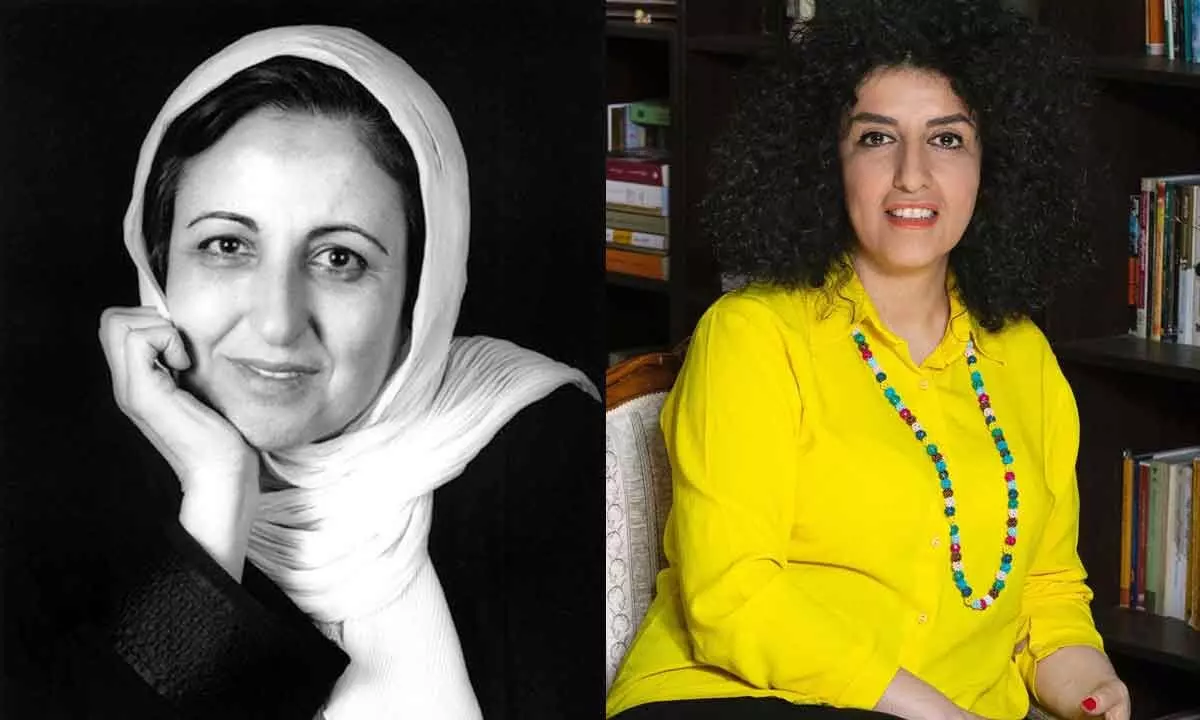Nobel laureates advocate women uplift, pay heed

Perhaps, there will be no better time to value women Nobel laureates than right now, for their lifetime work to better the lives of people, more so women, in their chosen field which is sometimes necessitated by times as in the case of Narges Mohammadi. The recognition of the distinguished work of economist Claudia Goldin by Nobel Committee coincides with as much regard for Iranian women’s rights defender Mohammadi who is languishing behind bars in Iran.
Both speak of unfair treatment of women, neglect of equal rights both at home and in society, and ways to emancipate them. India has just vowed to set right unequal representation of women in legislative houses, by fixing 33 per cent quota for them – though, not realisable until 2029.
Narges’ brave struggle has come at tremendous personal costs. She has been arrested 13 times, convicted five times, and sentenced to a total of 31 years in prison and 154 lashes as well - all for peacefully protesting against authorities’ brutality and oppression of women. Her inspiration derives from the first Iranian female 2003 Nobel Peace Prize laureate Shirin Ebadi who struggled for the rights of women and children.
Goldin propounds with statistics that women empowerment has immense potential to make the entire world more prosperous. The first tenured female Economics professor at Harvard parsed huge data as far back as 18th century to prove that female labour force participation doesn’t necessarily increase with economic growth, that education alone won’t eliminate the gender pay gap, and that other policies are needed to help women and the economy reach their full potential. Her deductions can find applications in right from contraception facilities to parenting roles to flexibility of work hours. It is found her insights can be used to promote gender equality, which could add up to or more than 50 per cent to the economic output of some nations.
In the case of India, women find empowerment and articulation in almost all fields, paving way for society’s overall development. Governments in states and at Centre are vying to promote their participation in all spheres of economic field, and ensure they attain self-worth, confidence and freedom to choose their needs and requirements. For first time, India has more women than men, as per the fifth National Family and Health Survey (NFHS), at 1,020 women for every 1,000 men. This ought to reflect in their numbers in employment and representation in power corridors as well. However, out of the present 542 LS members, 78 are female and in Rajya Sabha it is 24 out of 224 Members.
India is aiming to be a $5 trillion economy (currently about $3.7 trn) at the earliest by 2027. A Deloitte study says female labour force participation in India fell to 26% in 2018 from 36.7% in 2005. However, the 2020–21 PLFS1 (Periodic Labour Force Survey for all ages) shows a significant improvement in last three years, going up from 17.5 per cent to 24.8 per cent. Patriarchal structures demand that women prioritise domestic responsibilities over professional aspirations. Ensuring gender equality/parity, and unlocking the full potential of women in our workforce can raise nation’s economy as much as by 18 per cent, say reports. While Goldin’s research bears proof, Mohammadi’s sacrifice stresses its urgency. India awaits full realisation of ‘Beti Bachao Beti Padhao.’

















